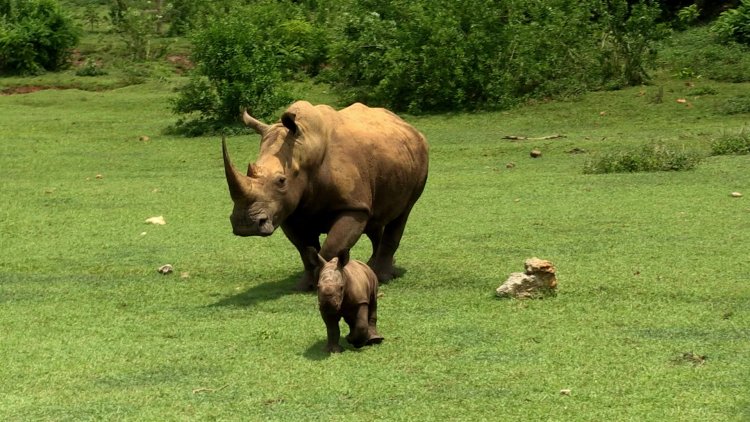Ale, the new baby white rhino at Cuba's national zoo

The zookeepers at Cuba's National Zoo are especially proud of Ale, a pudgy, gray-brown baby white rhinoceros born earlier this month on the outskirts of capital Havana.
For starters, he's cute. Baby rhinos look similar to adults, but have a stub in place of the horn and thus, are more docile in appearance.
But the white rhino is also a threatened species, and zoos the world across have been asked to reproduce them in captivity in the hope of creating a gene bank that will help preserve the species should it go extinct in the wild.
"It is a great privilege for us to be able to contribute to the rescue of a species as threatened as the white rhinoceros," said Alexander Arango, a Cuban zoo specialist in exotic wildlife, as he watched the newborn graze on a patch of grass beside his mother, Katherine.
Cuba, says Arango, now has the second largest population of white rhinos of any zoo in Latin America - a total of 8 - thanks to Ale and the birth of his sister, Mel, in 2019.
In a Caribbean island nation with limited resources and far from Africa, the increasing success in reproduction is a point of pride, the zookeepers said.
White rhinos have suffered in recent years as poaching has increased across their home range, primarily across southern Africa.
Cuba's National Zoo is a favorite attraction for Cubans, with 1,473 specimens of more than 120 species, including large animals such as elephants, rhinos and giraffes.















